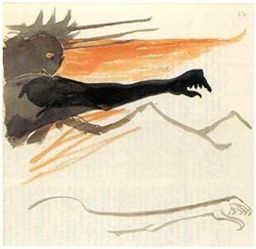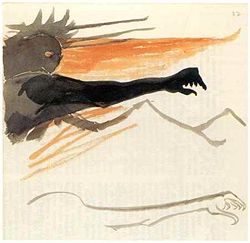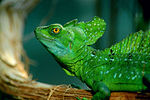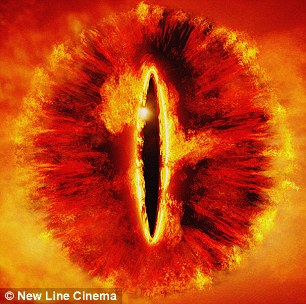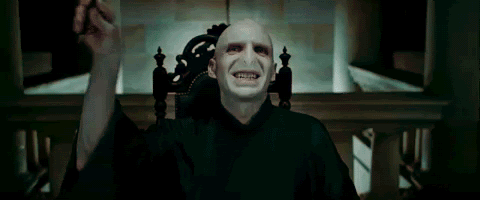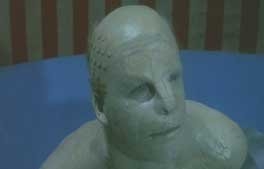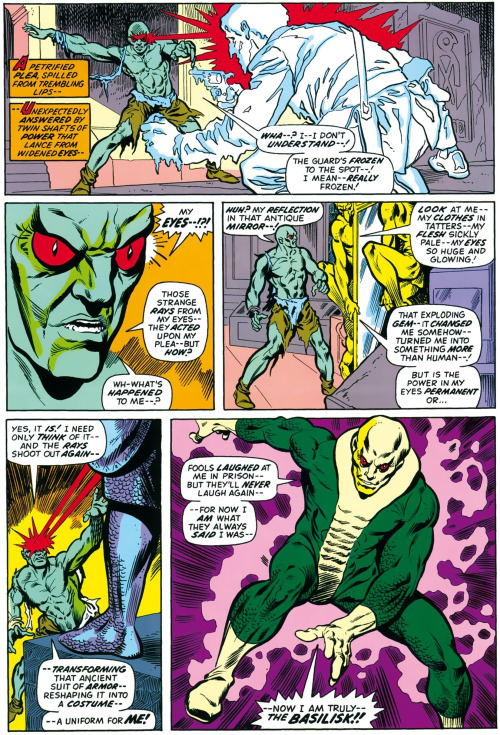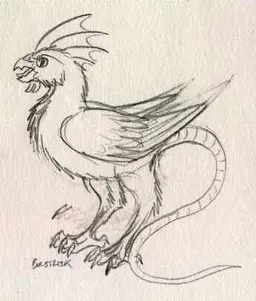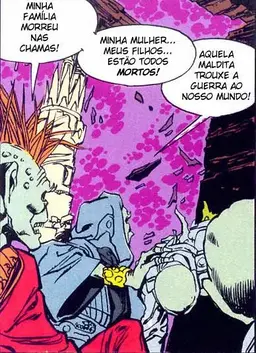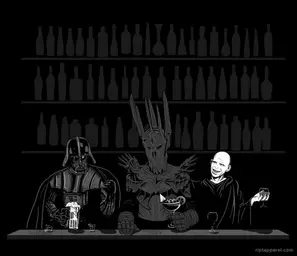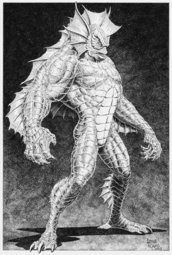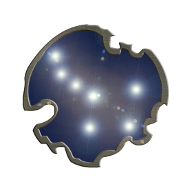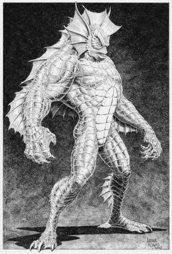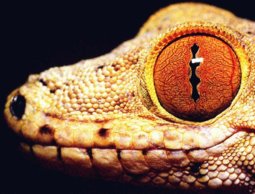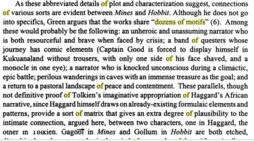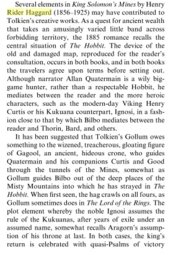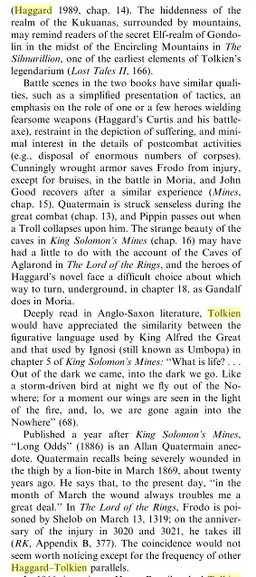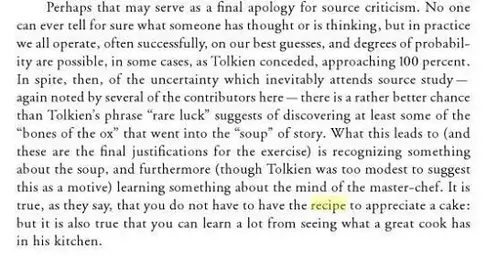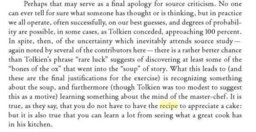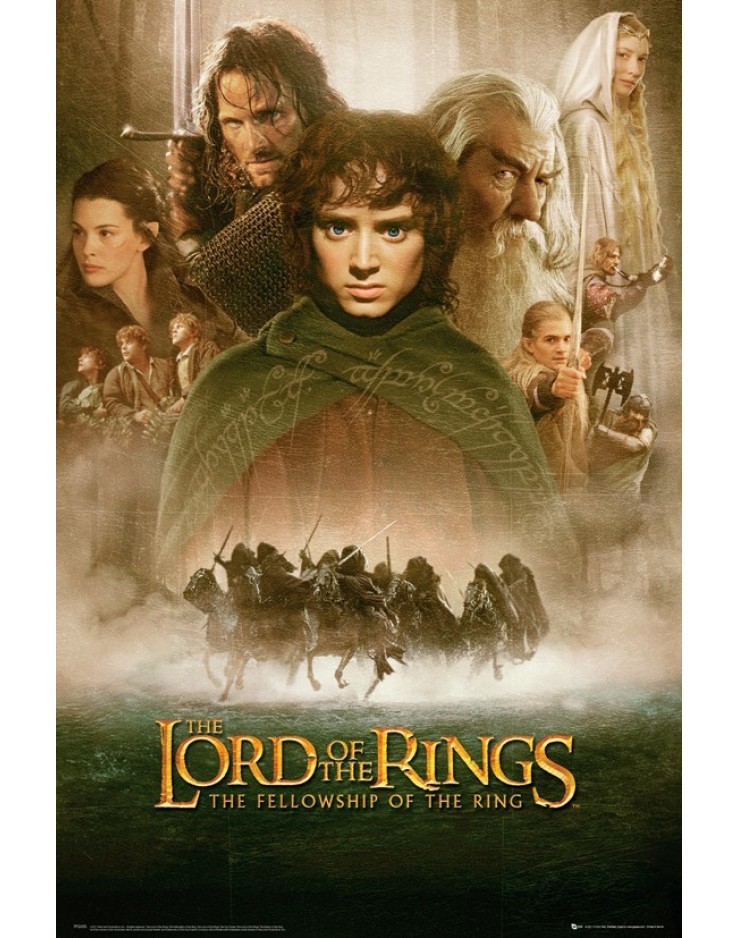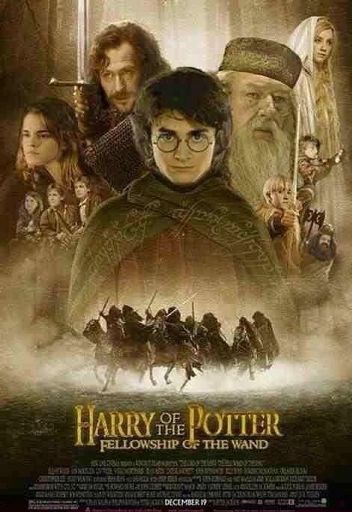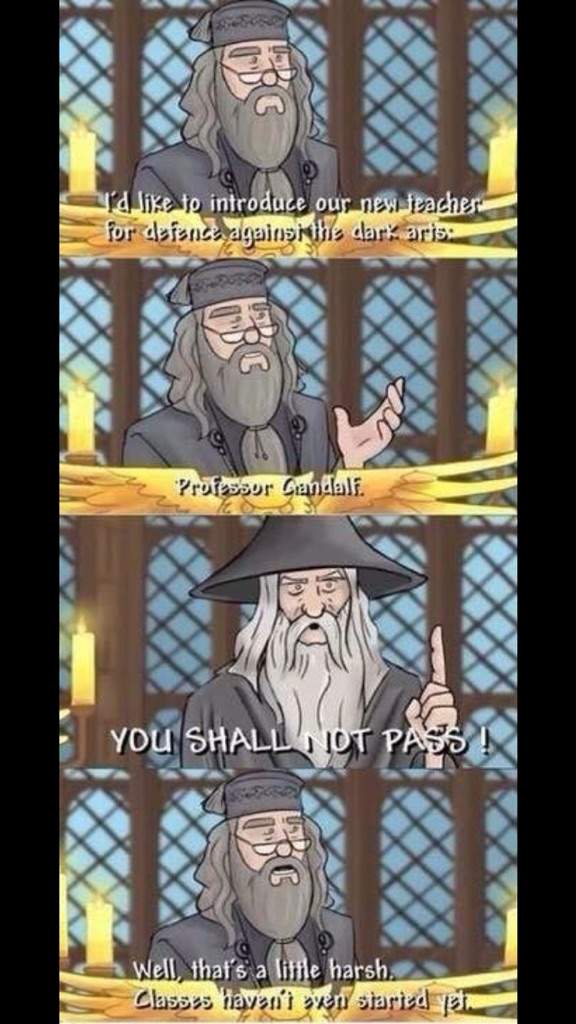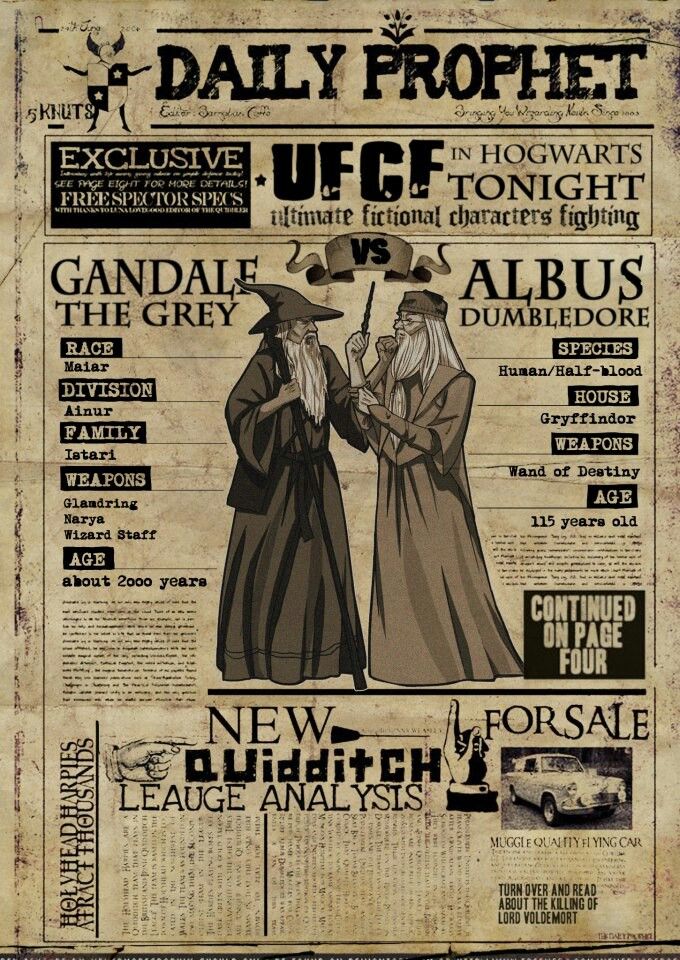Ilmarinen
Usuário
Mas as horcrux SÃO claramente inspiradas no Um Anel.
Inclusive se reparar no efeito do medalhão quando carregado no peito. Só que o Frodo - felizmente e apenas nos livros - não é tão CHILIQUENTO quanto o Ron.
A grande diferença é que eles podiam compartilhar o peso. Só que o CHILIQUENTO do Ron, era obviamente o mais suscetível e se apegou a bagaça! Por pouco não vira o Gollum!
P.S.: as horcrux tbm tem uma outra origem que tbm pode ter inspirado Tolkien. Eu achei na wikipedia há MUITO tempo e tem um nome esquisito. Não sei se consigo achar de novo, mas se achar posto aqui!
ACHEI!!! É o nome nem era tão estranho assim!
LICH:
Isso me lembrou também os Nazgul.
Bom, como você disse aí em cima Elriowiel, é fato inegável que há tradições míticas que inspiraram ambos os autores nessa de "pedaço da alma posto pra fora do corpo" sendo "âncora" material pra espírito desabrigado ou "morto-vivo", preservado por magia. Como você também observou, É FATO que a "filigrana", apelido dado RPGisticamente a esses objetos que contêm a alma do necromante fora do corpo, não é, via de regra, ou nunca foi "VIVA" e "pensante" como o Anel do Poder e as horcruxes demonstraram ser. Então, como vc bem intuiu, a Rowling incorporou os elementos míticos COM A INCLUSÃO dos acréscimos e contribuições de Tolkien na "mistura" assim como o próprio Tolkien fez ao cooptar o tema de Anel do Poder de Richard Wagner no Anel do Nibelungo.
O conceito do lich ou liche nos RPGs, na verdade, é uma adaptação do mito do "gigante que não tinha coração no corpo", mito universal analisado no capítulo do seminal livro o Ramo de Ouro de James Frazer (1905)* (X). O protótipo mais conhecido mundialmente é o russo Koschei, o imortal e o correspondente brasileiro é o monstro Manjaléu.
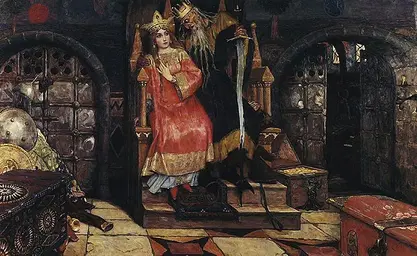
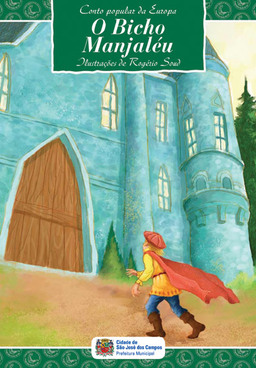
No livro de histórias Bard the Beetle que a Rowling publicou como anexo do Deathly Hallows tem a história do Coração Peludo que mostra que ela( como Tolkien) sabia muito bem no que ela estava se baseando quando criou as Horcrux ( que são um cruzamento entre horrível e cruz), a "cruz horrenda", garantindo a imortalidade na carne não através da entrega do espírito à mercê de Deus mas através da ruptura da própria alma pela eliminação do "Deus" subsistente na alma de outro ser humano mediante a infringência do "não matarás"...
Dizer que Dumbledore é cópia de Gandalf é O FIM... Primeiro, acho que quem diz isso nunca ouviu falar num cara chamado MERLIM.
Segundo, vamos analisar:
Gandalf: um Istari, um Maia, tem milhares de anos de existência, é chamado de mago mas é um espírito angelical escolhido para ser enviado à TM por Manwë e recebe de Círdan o anel Narya. É sua função - assim como do resto do Conselho Branco - impedir que novamente a escuridão tome conta por completo da TM.
Dumbledore: um bruxo humano 'comum' (como os outros bruxos da trama), exceto por parecer ser um gênio, um bruxo super-dotado e sábio. Tem no máximo 200 anos. Foi Prof. de Transfiguração e se tornou o Diretor mais querido de Hogwarts. Enfrentou e derrotou o bruxo das trevas Grindelwald em 1945sacou
de quem foi muito próximo. Também ficou famoso por ter descoberto os 12 usos do sangue de dragão e por ter desenvolvido um trabalho em de alquimia com Nicholas Flamel. Ah, e era gay!
realmente... IGUALZINHO, hein!
A única semelhança entre os 2 é serem chamados de magos e serem altos, magros, velhos e barbudos com chapéu pontudo, o que só significa que seguem o clichê que temos da imagem desse tipo de personagem.
Ignorar todas as outras referências literárias que a JK teve na vida e diminuir a sua obra a uma simples 'cópia' de SdA, além de ignorância é até um desrespeito com a pessoa inteligente e culta que ela é. Pois ela sempre foi, desde criança, do tipo que lê tudo que caia em suas mãos! SdA a influenciou, mas não foi nem de longe o único.
Aqui tem a biografia dela, para quem não conhece: http://forum.valinor.com.br/showthread.php?t=100054
Também recomendo o livro O Manual do Bruxo para entender as referências e influências existentes em Harry Potter (mas só vai até o 4º livro).
Se me disser que Voldemort é uma alegoria para Hitler, aí sim eu concordo... isso é totalmente claro e óbvio. Mas, mesmo assim, Hitler é um ser que existiu (infelizmente) na vida real. Não é invenção de autor nenhum...
E Elriowiel, sem tirar o mérito do seu comentário de que a existência de similaridades não torna a Rowling plagiadora e não desmerece o talento e cultura que ela, obviamente, no meu entendimento, de fato, tem; apesar das diferenças elencadas por você, existem, sim, um punhado de similaridades contextuais entre os papéis desempenhados por Gandalf e Dumbledore que mostram uma influência direta de Gandalf. Na sua ênfase pra isentar a Rowling de plágio meio que você pode estar correndo o risco de "jogar o nenên fora junto com a água do banho".
Vide a cena que é, talvez, a homenagem mais explícita ao equivalente tolkieniano quando no Enigma do Príncipe, o Dumbledore guia Harry através de uma "caverna com uma senha mágica" oculta ( "Mellon" na Porta de Moria x o sangue no Half Blood Prince) e depois enfrenta os inferi ( reminiscentes dos mistérios do lago subterrâneo de Moria e do lago do Vigia da Porta Ocidental) numa ilhota dentro de lagoa subterrânea, com um chicote de fogo ( a arma do Balrog). Sem mencionar que uma ilhota no centro de um lago subterrâneo TAMBÉM foi o local de ocultação do Anel Soberano* quando em posse de Sméagol-Gollum -ele mesmo um "ghoul" ou o equivalente tolkieniano de um "inferi"- no Hobbit
*( a "horcrux" de Sauron similar ao Medalhão de Slytherin ).
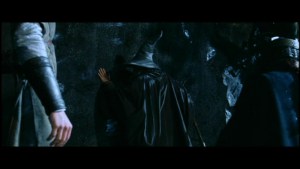
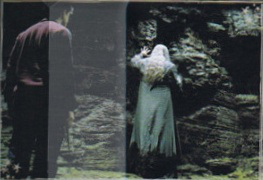
TAG ARCHIVES: HARRY POTTER AND THE HALF BLOOD PRINCE
Half-Blood Prince – LOTR?
Posted on July 15, 2009
21
Literally just came home from Parra after watching the movie. So.. this is what I got out of it.
Do NOT read this if you intend to go see the movie later – it’ll warp your view of it. Stop reading here and come back to it when you’ve seen it.
If you have seen it, or definitely won’t go see it, please continue reading.
.
..
…
..
.
..
…
..
.
..
…
..
.
..
…
..
.
..
…
..
.
..
…
..
.
..
…
..
.
..
…
..
.
..
…
..
.
..
…
..
.
Anyway. The movie.
I found it really enjoyable, but that may have been because I was watching with Sally, Shirley, Cloi and Yvonne, and movies do depend on who you watch it with and stuff. And I also make a point of not reading the book before the movie, so I don’t realise all the bits that have been cut off. I only read the sixth book once, actually. I wasn’t much of a fan of the 6th and 7th books – I read the first few multiple times.
The first thing I’d like to point out in the movie.. was the resemblance to Lord of the Rings. Yeah, yeah, they were working off the book. But.. it had quite a lot of striking similarities, if anything. `specially the part where they go to find the locket Horcrux – it just reminded me so much of the mines of Moria from the Fellowship of the Ring.
1. M’boy, we need to talk.
2. Dumbledore finds the entrance.. to the Mines of Moria.
3. I think there’s something in the water. (I can’t find a pic online of the shot I want from HBP, so this will have to do. There was one more LOTR-ish. )
4. ..it was fine until now.
5. YOU SHALL NOT PASS.
6. Yeah, you heard me.
7. YOU.. SHALL.. NOT… PASS!
Yeah, that’s it. It just seemed.. a little similar. Gah, WordPress is screwing around with my formatting T_T
Woah, it took about two hours to find those pics. I’m wasting so much time. Meh.
What else about the movie? The cinema was packed – lucky we booked our seats. There were these guys with super bogan accents behind us.. but they were funny. When Hermione asks how Harry knew the locket was a fake, and he opens it.. … the guys went ‘MADE IN CHINA’. xD
I would not recommend this movie if you’re homophobic. Actually, if you’re super homophobic, you’ll block it out of your mind and have no clue what I’m on about. But.. seriously. Slughorn looks like a pedo, Bellatrix seems incest-y with Draco… and well, the rest of the movie is going to inspire a tonne of slash fanfics. There were more Dumbledore/Harry, Slughorn/Harry and Draco/Harry moments in that movie than the screentime with Harry and Ginny – speaking of which, Ginny seemed to keep randomly hitting on Harry. Quite awkwardly, too.
And no, I wasn’t the only person who couldn’t help but notice it. Quite a few people cracked up when Snape pinned Draco to the wall.
Maybe my mind’s been tainted after I watched Loveless. Everything’s so subtle in it (well, usually), I guess I’ve started to overanalyse Harry Potter. Maybe.
But yes. I found the movie very entertaining x)
Hmm. I should probably go do some work. It’s the third movie I’ve watched in the last four days. I’m going to fail my trials at this rate xD
Might blog later on Forrest Gump and Letters to Iwo Jima. They were awesome =)
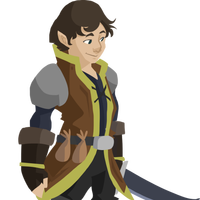
half-blood prince – New Media: Storytelling in Literature, Films, and Games
Posts about half-blood prince written by theophildentchev
 worldsofwordcraft.wordpress.com
worldsofwordcraft.wordpress.com
O fato do nome do ALBUS do nome do Dumbledore evocar e enfatizar a conexão com Gandalf, o BRANCO e a suposta conexão com ELFos ( que era pensada a respeito de Gandalf) também é um reforço que intensifica a conexão.
Os papéis "genéricos" de tutores/mentores de heróis predestinados dos dois personagens ( culpem Merlin) também estão atrelados a um débito (não muito reconhecido) de ambos com outras fontes mais insuspeitas. Tanto Gandalf quanto Dumbledore têm muito a ver com correspondentes ficcionais de livros de mistério que, possivelmente, influenciaram muito Tolkien e Rowling. Gandalf tem um montão de paralelos com Sherlock Holmes( a dependência do tabagismo pra pensar direito, a "morte aparente" com uma queda engalfinhado com um inimigo mortal) e Dumbledore com o Hercule Poirot da Agatha Christie,inclusive, muitos especulam, no detalhe da homosexualidade do personagem (que vale pro Sherlock Holmes, talvez, numa escala até maior.
Última edição:


















